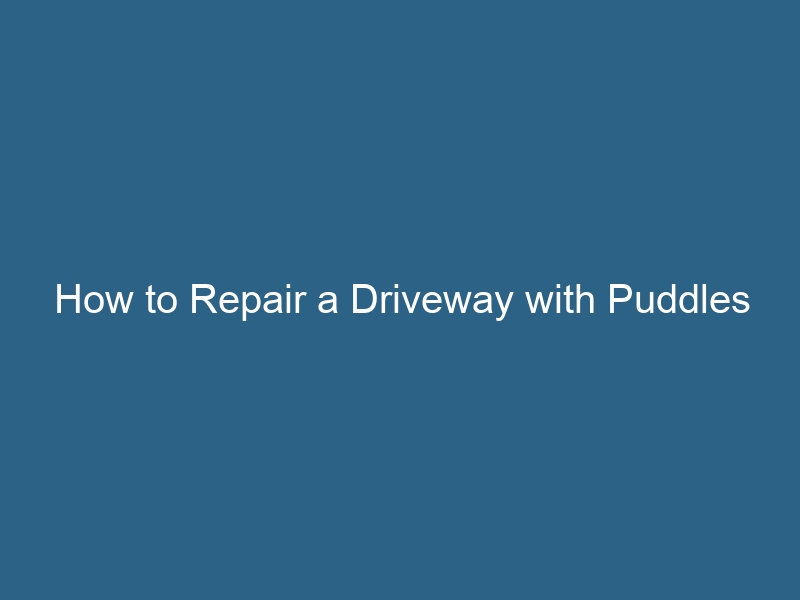Quck answer
If your driveway has puddles, there are a few steps you can take to fix the issue. First, identify the cause of the puddles, which could be poor drainage, a low spot, or a damaged surface. Next, address the underlying issue by improving drainage or filling in low spots. This can involve adding a slope, installing a drain, or using gravel or sand to level the surface. Finally, repair any damaged areas in the driveway, such as cracks or potholes, to prevent future puddling. Regular maintenance and proper drainage will help ensure a driveway free of puddles.
After it rains, water should drain evenly off your driveway. If you notice low spots and puddles instead, it means that the surface is no longer level. Over time, chips, cracks, and holes can develop on your driveway, causing uneven wear, low spots, and damage to the surface. By examining your driveway after each rain and promptly addressing puddles, you can save time and money in the long run. While drainage problems and tilting due to freezing and thawing can also cause puddles in the driveway, low spots are one of the most common causes and can be easily fixed on your own.
What You’ll Need
-
Broom
-
Brush
-
Chisel
-
Driveway cleaner
-
Hose or power washer
-
Patching material
-
Long-handled applicator brush
-
Long-handled roller
-
Tamper
-
Driveway sealant
How to Repair Your Driveway
Step 1: Identify and Mark the Puddle Locations
Place a solid object at each end of the puddle to mark the areas where puddles form. It may be helpful to do this after a heavy rain to easily identify the problem areas. Examine the driveway from top to bottom, paying attention to where the rain hits the puddles. This will indicate where the issues are.
Step 2: Clean the Spots
Use a broom or brush to clean each marked spot. Then, remove any loose asphalt or gravel using a chisel. If the driveway is greasy or dirty, clean it with a commercial driveway cleaner before proceeding with the repair. Apply the cleaner with a heavy-duty broom or brush, and then wash the driveway with a high-pressure garden hose or power washer.
Step 3: Apply Patching and Bonding Material
Apply patching material to each low spot on the driveway. Follow the instructions on the package as the application may vary slightly depending on the brand. In most cases, you will brush the patching material onto the driveway and use a long-handled roller and brush to smooth it out. You can purchase a special brush and roller applicator at the hardware store when buying the patching material. Apply driveway coating or emulsified liquid on top to bond the patching material to the underlying driveway.
Step 4: Smooth the Surface
Use a driveway roller to smooth out the patched areas. You can rent a driveway roller from a local hardware store, which will make fixing and sealing your driveway much easier. The driveway roller is designed to attach to your lawn tractor, allowing you to simply drive over the driveway surface to tamp it down. If you don’t have a lawn tractor, you can use a hand tamper to even out the patched areas.
Step 5: Allow the Patches to Dry and Seal
Let the patches dry completely. Then, apply a seal coat to the entire driveway to complete the repair. Use a brush and long-handled roller to apply the seal coat. You can purchase a special roller and brush combination at the same place where you buy driveway sealer.


